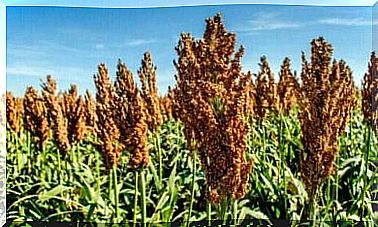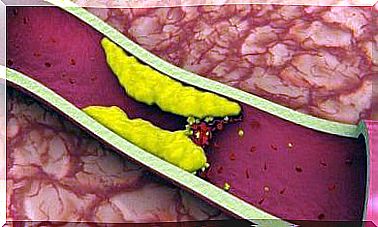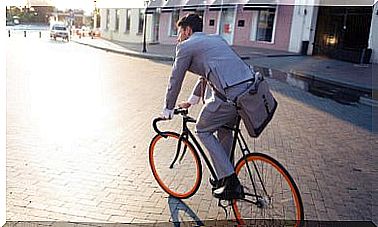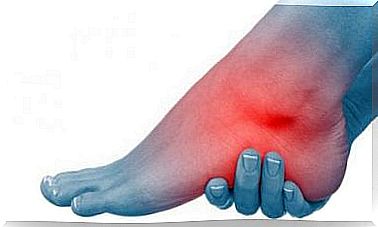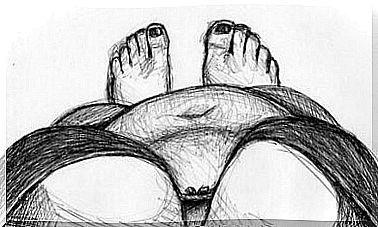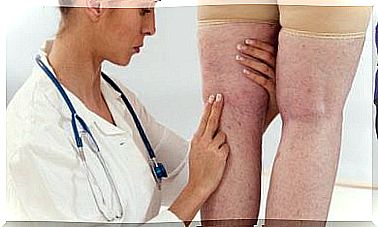Symptoms And Treatments For Muscle Strain
Muscle strain occurs when there is dynamic overload, often due to overexertion during physical activity. Symptoms and treatment depend on the extent of the injury.

Muscle strain, commonly referred to as muscle strain, is the partial or complete tear of the myotendin junction. This is the transition zone between the muscle and the tendon. It occurs when a muscle undergoes excessive stretching. This results in the breakdown of muscle fibers.
Adjacent structures, such as tendons or blood vessels, can also be damaged. In this case, a hematoma will appear in the damaged area.
These injuries are due to dynamic overload, often accompanied by sudden changes in intensity and position. This phenomenon is usually explained by frequent overuse in high intensity sports such as basketball, football or track and field. There are 3 different degrees of muscle tear depending on the level of rupture:
- Mild or grade 1 muscle strain : microscopic rupture of the muscle fiber. The tendon and adjacent blood vessels are intact.
- Moderate or grade 2 muscle strain : partial rupture of muscle fiber and adjacent ligaments. A hematoma occurs as a result of ruptured blood vessels. Mobility of the affected area is affected.
- And, finally, serious or grade 3 muscle strain : complete rupture of muscle fibers and ligaments with total or almost total loss of function. There is a visible hematoma and an inflammatory reaction.
Symptoms
The symptoms depend on the degree of rupture of the muscle fiber. We will therefore proceed to the classification according to the level of tearing:
- Grade 1 : no loss of function, complete mobility of the injured area is maintained. There is a small inflammation accompanied by slight discomfort. The patient may not identify it until the physical activity that caused it ceases or even the next day.
- Grade 2 : function is partially affected and there is loss of mobility. Pain when palpating the affected area and the presence of inflammation and hematoma. In this case, the patient is aware of the injury at the same time as it occurs, forcing him to stop physical activity.
- Grade 3 : partial or total loss of mobility in the affected area. There is edema and hematoma, as well as high pain relief, which makes the lesion noticeable to the patient immediately. Palpation can detect irregularities in muscle tissue.
Treatment
Treatment will depend on the time since the injury, as well as the degree of muscle fiber rupture. In all cases, the application of heat is indicated when the pain subsides. The main treatments applied in each case are as follows:
Grade 1 muscle strain
For the first few days, apply ice and compress the affected area. Also, the patient should rest, elevate the affected area, and perform resting isometric exercises, which subject the muscle to tension without making any movement. Subsequently, light or moderate physical activity will be necessary in order to gradually resume daily life.
Recommended activities include pool training, gentle stretching, or light weight lifting. The application of anti-inflammatory drugs is usually not necessary, as the pain is mild.
Grade 2 muscle strain
As in the case of a slight distension, during the first 2-3 days, we advise you to apply ice and compress the affected area, as well as rest and elevation. From the fourth day, isometric exercises can begin, with caution and stopping the activity in case of pain.
During the next two weeks, moderate physical activity is recommended until full mobility recovery. Medication may be needed to treat the inflammation and pain.
Grade 3 muscle strain
During the first days, we follow the same protocol as mentioned above. Depending on the severity of the injury, total rest or walking with crutches is recommended.
Isometric exercises are indicated from the second week. Subsequently, it is recommended to incorporate physical activity gradually, until full recovery, which will take place around the fourth week. The use of anti-inflammatory drugs is recommended.
